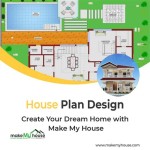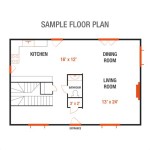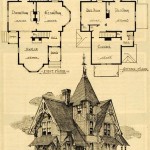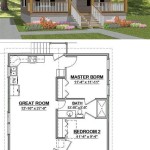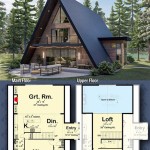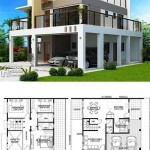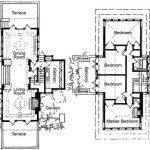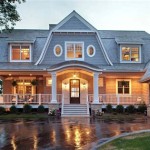24 X 36 House Plans: Optimizing Space, Affordability, and Styles of Homes
The construction of a new home is a significant undertaking, demanding careful consideration of various factors, including budget, spatial requirements, and aesthetic preferences. Among the diverse range of housing options, 24 x 36 house plans offer a compelling balance between affordability, efficient space utilization, and stylistic flexibility. These plans, generally encompassing approximately 864 square feet of living space, present an ideal solution for individuals, small families, or those seeking a compact, manageable residence. This article examines the benefits, design considerations, and stylistic possibilities associated with 24 x 36 house plans.
Space Optimization in 24 x 36 House Plans
The limited footprint of a 24 x 36 house necessitates meticulous planning and design to maximize usability. Every square foot counts, and effective space optimization becomes paramount. Several strategies can be employed to achieve this goal.
Open floor plans, for instance, are instrumental in creating a sense of spaciousness. By minimizing the number of interior walls, the living, dining, and kitchen areas can be seamlessly integrated, allowing for greater natural light penetration and improved traffic flow. This arrangement not only makes the home feel larger but also fosters a more sociable atmosphere.
Another crucial aspect of space optimization is the utilization of vertical space. Incorporating high ceilings, strategically placed windows, and loft areas can significantly enhance the perception of volume within the home. Lofts can serve as additional storage, a home office, or a guest bedroom, adding functionality without expanding the overall footprint.
Furthermore, built-in storage solutions, such as bookshelves, cabinets, and window seats with integrated storage compartments, are invaluable for decluttering and organizing belongings. These features not only maximize space but also contribute to a more streamlined and aesthetically pleasing interior.
Multi-functional furniture also plays a vital role in space optimization. Sofa beds, folding tables, and ottomans with storage capabilities can adapt to various needs, making a small space more versatile and practical.
The strategic placement of windows and doors is critical for maximizing natural light and ventilation. Large windows, strategically positioned to capture sunlight, can make a room feel brighter and more inviting. Similarly, well-placed doors can facilitate easy access to outdoor spaces, extending the living area beyond the confines of the interior.
Affordability Factors in 24 x 36 House Construction
Affordability is a primary driver for many individuals considering 24 x 36 house plans. The smaller footprint translates directly into lower construction costs, making homeownership more accessible. Several factors contribute to the affordability of these plans.
Reduced material costs are an obvious benefit. Less lumber, roofing material, siding, and insulation are required, resulting in significant savings on construction materials. This makes the initial investment significantly lower compared to larger homes.
Lower labor costs are another advantage. The construction of a smaller home generally requires less time and fewer workers, translating to lower labor expenses. This can be a substantial saving, especially in areas with high labor rates.
Reduced utility costs are a long-term benefit. Smaller homes require less energy to heat and cool, leading to lower monthly utility bills. This contributes to greater financial stability and reduced environmental impact.
Lower property taxes are also associated with smaller homes. Property taxes are typically assessed based on the value of the property, and smaller homes tend to have lower assessed values, resulting in lower property tax obligations.
Simpler foundation requirements can also contribute to cost savings. Smaller homes often have simpler foundation designs, requiring less excavation and concrete work. This can translate to significant cost reductions, especially in areas with challenging soil conditions.
However, it's important to note that affordability is not solely determined by the size of the house. Material choices, finishes, and the complexity of the design can all influence the overall cost. Careful planning and budgeting are essential to ensure that the project remains within the desired financial parameters.
Diverse Styles of Homes Suitable for 24 x 36 Plans
Despite their compact size, 24 x 36 house plans can accommodate a wide range of architectural styles, allowing homeowners to express their individual tastes and preferences. From traditional to contemporary, the possibilities are virtually limitless.
The classic cottage style is a popular choice, characterized by its cozy and charming aesthetic. Features commonly associated with cottage-style homes include gabled roofs, dormer windows, and covered porches. Natural materials, such as wood siding and stone accents, are often used to enhance the rustic appeal.
Modern farmhouse designs offer a blend of traditional and contemporary elements. These homes often feature clean lines, neutral color palettes, and large windows that maximize natural light. Common design elements include shiplap walls, barn doors, and open floor plans.
Contemporary designs emphasize minimalism and functionality. These homes typically feature clean lines, flat roofs, and large expanses of glass. Emphasis is placed on creating a sleek and modern aesthetic, with a focus on energy efficiency and sustainability.
Ranch-style homes are another viable option, characterized by their single-story layout and low-pitched roofs. This style is particularly well-suited for individuals with mobility limitations or those who prefer a more horizontal living arrangement.
Scandinavian-inspired designs prioritize simplicity, functionality, and natural light. These homes typically feature light-colored walls, minimalist furnishings, and an emphasis on creating a warm and inviting atmosphere. Natural materials, such as wood and stone, are often used to enhance the connection to nature.
Tiny home designs are also increasingly popular. While often smaller than 24 x 36, many principles and designs can be scaled up slightly to fit the footprint. These designs prioritize minimalism and resourcefulness, often incorporating innovative storage solutions and multi-functional spaces.
Regardless of the chosen style, careful attention to detail is crucial to ensure that the design effectively utilizes the available space and reflects the homeowner's personal preferences. Working with an experienced architect or designer can help to create a custom plan that meets the specific needs and desires of the homeowner.
In conclusion, 24 x 36 house plans offer a compelling combination of affordability, space optimization, and stylistic flexibility. By carefully considering the design principles outlined above, individuals can create a comfortable, functional, and aesthetically pleasing home that fits their budget and lifestyle.

Affordable Ranch Country Style House Plan 6201

Est House Plans To Build Simple With Style Blog Eplans Com

Stylish Low Budget Modern 3 Bedroom House Design Plans Blog Floorplans Com

Two Story Contemporary Style House Plan 7570

Est House Plans To Build Simple With Style Blog Eplans Com

Affordable 2 Bedroom Tiny House Plans That We Love Houseplans Blog Com

Craftsman Style House Plan 9302 Riverview

Top 50 Amazing House Plan Ideas Engineering Discoveries 8f9

Stylish Low Budget Modern 3 Bedroom House Design Plans Blog Floorplans Com

Small Home Plans
Related Posts

